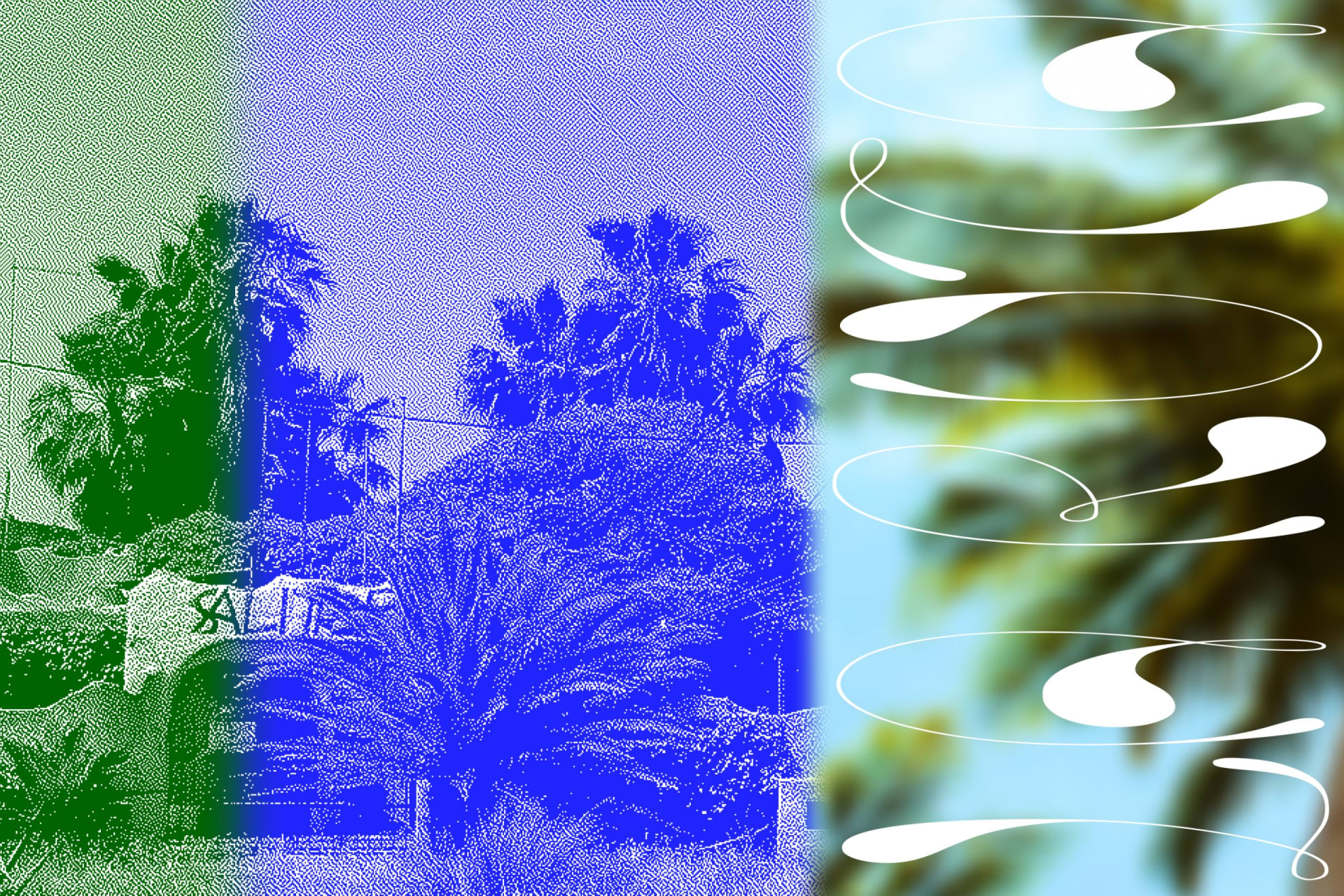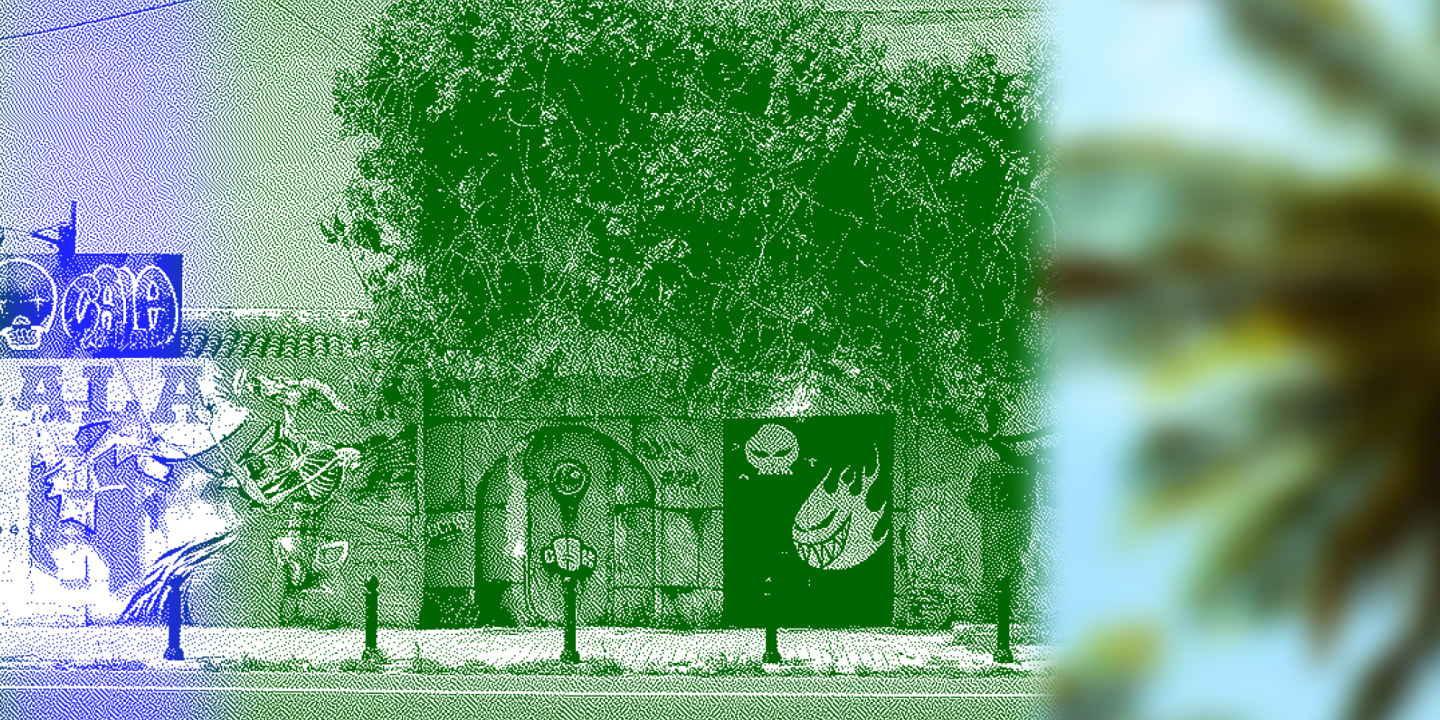

10 records to tale La Ruta, the Spanish highway that rivalled Ibiza’s club scene
Spanish music journalist Yasmina Elkak dives into the sound of the country's wildest clubbing route, from its origins in the '80s up to its end in the 90s.
As a child raised during the 90s in Valencia, it was very common to collect discoteca flyers and glue them to your room or school agenda. As I grew up, I realised that this was an anomaly that only happened in this part of the world. Yes, we can all agree the Spanish have always had a reputation for loving a fiesta until the late hours – but amongst the Spanish, Valencians are the masters at it.
Why? Beyond being naturally rowdy and rebellious, we love noise, fireworks, street music, and since I remember, clubs have always opened the longest hours here. When Franco’s fascist dictatorship ended in 1975, Spanish people were understandably hungry for freedom and self-expression – with the explosive clubbing scene in Valencia being a testament to that.
It’s interesting how everyone is used to hearing about the top-notch clubbing scenes in Berlin, Amsterdam or Kiev, but few have heard about La Ruta (or also called La Ruta del Bakalao / La Ruta Destroy, meaning ‘The Route’). La Ruta was effectively the first and largest clubbing scene in the world during the 80s and 90s. What started with a few clubs opening up in abandoned factories evolved into a pilgrimage bringing more than 50K ravers every weekend at its peak, from artists, fashion designers and filmmakers to your average Joe.
There were many reasons that made it legendary. From Thursday to Monday, there were plenty of options for cañeros (meaning ‘Hardcores’, as the Ruta ravers would refer to themselves) to party. In fact, the first European club to legally open in the so-called “after-hours” was Spook Factory, a 4,000 capacity club operating since 1984. Ibiza neighbour’s Amnesia and Ku followed by programming its first matinée sessions in 1985. NOD, in Ribarroja, made parkineo (parking culture) a thing, transforming the parking area into some sort of adjacent outdoor party, including free paella. Chocolate club, in Sueca, began hosting gigs at 7AM. Barraca, also in Sueca and open since 1965, had drag queens like Faraona performing on the dancefloor.
What was going on in Valencia was unheard of, because the local pioneers were punks looking for provocation and transgression – to the point where they completely redefined club culture. But Valencia didn’t have an industrial background such as Bilbao, nor was as cosmopolitan as Barcelona, so what was the recipe for a few villagers to create the most cutting-edge scene in the world?

Firstly, the ties with music are notorious, being the European region with the most musicians per capita. It is very common to study Music from an early age at the Conservatorio, and then play in symphonic brass bands. Secondly, promoters and venue owners didn’t rely on investors’ money to open these clubs up, which attracted the right crowds and created an inclusive atmosphere. Thirdly, location. For better or worse, Valencia was out of the spotlight, so had enough room to experiment freely, far from authorities and the media. And let’s not forget infrastructure. In the Carretera El Saler –a coastal motorway surrounded by palm trees and orchards– there were plenty of abandoned potato and rice factories, which would serve as the perfect scenario for ravers to party clandestinely (at least, at the beginning).
Valencia’s clubs offered a secluded way of partying, far from police attention, with a crowd curious enough to find out what this so-called “dance music” was all about. Whilst all you could find in the pre-Ruta discotecas was rumba, funk, and unfortunate macho fights, DJs like Fran Lenaers were ready to shake things up mixing forward-looking genres such as EBM, synth-pop, post-punk and acid house – igniting a very impressive club culture in the people.
The beauty of anonymity and transgression didn’t last forever, though. The more people coming every weekend, the more the media started to take note of the matter. The French TV network Canal+ aired a documentary in 1993 that focused on the local drug intake rather than in its musical avant-garde, which upset both promoters and authorities. But it also attracted the wrong crowds, looking for harder drugs and faster BPMs. From this point, the police made sure the scene collapsed. And it surely did, by the late 90s.
Capturing the golden era of clubbing in 10 tracks has been both painful and astonishingly exciting. Guitars, EBM, Makina – La Ruta had it all, and paying tribute to a movement that was unfairly treated by society, press, and authorities is the best way to reclaim it. So, to the melancholic cañeros and to the outsiders that never heard of it – please join me in this journey to the past to understand our present and future.
Glamour - Imágenes (1981)
This element will show content from various video platforms.
If you load this Content, you accept cookies from external Media.
Glamour was the first popular Valencian band from La Movida, a parallel contracultural guitar-lead movement born in city bars inspired by British new wave and Neue Deutsche Welle. Clubs’ newfound love for guitar music meant these new romantic bands had an additional space to play and were an attractive asset to any night.
B-Movie – Nowhere Girl (1982)
This element will show content from various video platforms.
If you load this Content, you accept cookies from external Media.
The synth-pop and post-punk scene in Valencia is finding its space and audience, with promoters bringing bands such as Soft Cell, Thompson Twins, Alphaville or B-Movie to play in small villages’ clubs in the late hours. By 1982 ‘Nowhere Girl’ was already a well-known anthem in the region.
Severed Heads – Dead Eyes Opened (1983)
This element will show content from various video platforms.
If you load this Content, you accept cookies from external Media.
DJ Rafa Pastor would play this record from Australian electronic music duo Severed Heads during the 80s at Spook Factory. The origins of what we understand today as dance-music are probably encapsulated in this track that changed the game, from dancing to guitar-lead sounds to synthy beats.
Robotiko Rejekto – Rejekto! (1987)
This element will show content from various video platforms.
If you load this Content, you accept cookies from external Media.
This German classic, with some fun Romanian lyrics in it, was thoroughly played in Valencia, especially at Spook Factory. Frankfurter’s RaHen and Talla 2XLC produced this track under the Techno Drome International label: a historical moment given it was the first record with the label ‘techno’ on it. Talla 2XLC’s focus in EBM/industrial-dance was something that DJs loved in the earlier La Ruta.
Front 242 – Headhunter (1988)
This element will show content from various video platforms.
If you load this Content, you accept cookies from external Media.
Belgian band Front 242 is probably the best EBM band in history, responsible for defining the genre during the 80s. Kraftwerk set the electronic music in motion, but Front 242 made techno what it is today. ‘Headhunter’ was released in 1988 and became one of the dark anthems from La Ruta, with cañeros wearing their merch everywhere.
Megabeat - Es Imposible, No Puede Ser (1990)
This element will show content from various video platforms.
If you load this Content, you accept cookies from external Media.
The new decade welcomes the most prolific phase music-wise for La Ruta. Clubs are temples, DJs are wealthy and autochthonous labels and producers are flourishing, shaping the sound of a golden Era – the so-called ‘Sonido de Valencia’. The electronic music trio Megabeat is responsible for kicking things off, and ‘Es Imposible, No Puede Ser’ is still a much-celebrated song to this day.
Chimo Bayo – Asi Me Gusta A Mi (1991)
This element will show content from various video platforms.
If you load this Content, you accept cookies from external Media.
This song is responsible for putting Valencia on the map globally, produced by Germán Bou and Rafael García. Failed motocross rider Chimo Bayo decided to give music a try, wisely impersonating a Front 242-lookalike that eventually took him to Japan. All over, people were singing a chorus that clearly referred to having ecstasy pills… even on MTV! Did Valencian DJs play this in the clubs, though? No way Jose. They hated how commercial it was. Barraca’s resident Carlos Simó would frequently break a record in front of the audience when it hit the radio charts – and obviously, this was one of them. To him, this was the beginning of the end.
Espiral - Dunne (1991)
This element will show content from various video platforms.
If you load this Content, you accept cookies from external Media.
Therein lies the soundtrack of a generation of cañeros, also produced by local hero Germán Bou under the nickname ‘Espiral’, a Ruta club in L’Eliana. Rumour has it that Manconian band 808 State would play this on Sunset Radio Manchester a lot, and it is no surprise. Tony Wilson, the owner of Manchester’s infamous club The Haçienda and Factory Records, once said Valencia and Manchester shared an identical capacity to manage the explosive scenes happening in both cities. And that seems right.
Newton – Streamline (1994)
This element will show content from various video platforms.
If you load this Content, you accept cookies from external Media.
Some refer to it as “the old techno whistle song,” which I think is an accurate way to describe this classic track released by Valencian producer Juan Carlos Plá under Lethal Records. ‘Streamline’ travelled quite far internationally, making it as the soundtrack of an American Pepsi commercial starring a young Jimmy Fallon.
New Limit – Smile (1995)
This element will show content from various video platforms.
If you load this Content, you accept cookies from external Media.
New Limit was a futuristic Y2K-aesthetic band from Silla that captured the death throe of La Ruta. The turn of the millennium is around the corner, and dance music is established enough to encompass different variants. In Valencia’s case, it was makina: a genre that took inspiration from hardcore and eurodance and included lots of cantaditas (a mix of New Beat and UK pop with predominant high-pitched female voices). Makina became so mainstream that it was even on a children’s regional TV program presented by the iconic María Abradelo, and transcended borders, making it very popular in the North East of England.
Yasmina Elkak is a full-time Editorial Creative at DICE and freelance writer based in Spain. You can find her on Instagram. Artwork by Sofia Apunnikova.
Published November 25, 2021.






Follow @electronicbeats